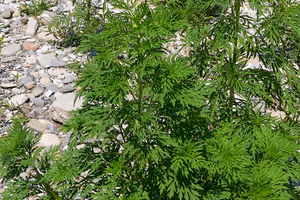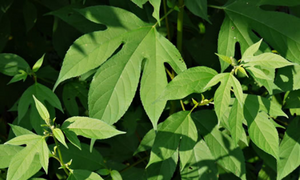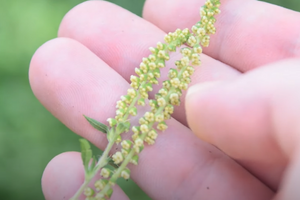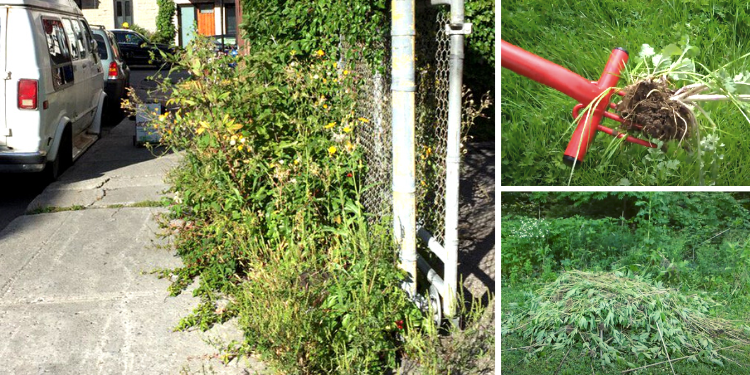If you are like millions of people across America, seasonal plant allergies are probably a dreaded aspect of the changing seasons.
While we can be allergic to everything from cats to coriander, one allergy is so common that most people immediately feel the burning, itching, and sneezing it brings each season.
Almost 25 million people in America suffer each year thanks to ragweed, which causes them to battle a runny nose, itchy eyes, endless sneezing, and labored breathing.
Unfortunately, almost 20 variations of this plant can be found in 49 of the 50 United States, with Alaska being the only state in which it does not grow.
Two types of ragweed are typically encountered in North America, common ragweed and giant ragweed.
What Is Ragweed?
 Ragweed is a common plant that emerges in the spring and sets seeds in the late summer/fall.
Ragweed is a common plant that emerges in the spring and sets seeds in the late summer/fall.
Found growing in shallow soils across the U.S., North America, and throughout Europe, the ongoing and often invasive spread of ragweed is fueled by climate change.
Related: 7 Foraging Mistakes That Might Get You Killed
Its pollen is notoriously known for causing allergic reactions. It is thought that more than half the pollen-related allergic rhinitis (hay fever) results from various types of ragweed growing worldwide.
The most widespread variant of this annoying plant is the common ragweed, also known as Ambrosia artemisiifolia.
Identification
Ragweed can be challenging to identify due to the many variations found worldwide. Common ragweed can remain mere centimeters or tower to more than four feet tall.
 The leaves of a ragweed plant are as diverse as the plant itself and can be found growing alternately, oppositely, or both.
The leaves of a ragweed plant are as diverse as the plant itself and can be found growing alternately, oppositely, or both.
The giant ragweed species has palmate leaves, meaning the leaves look like the palm of a hand.
While the leaves of giant ragweed generally have serrated edges, this is not always the case.
On the other hand, common ragweed has leaves that are made up of multiple smaller leaves. The common ragweed leaves are more fern-like and are referred to as twice, or double compound leaves.
Related: 11 Dangerous Plants You Should Never Have In Your Backyard
Among the standard variety, the leaves of the common ragweed generally remain more diminutive in size. Common ragweed leaves usually grow to around 6 inches long and 4 inches across.
The stem of a ragweed plant can also differ depending on the type and location of the weed, but they generally form to become a flower spike which allows them to quickly release seeds at the end of their seasonal cycle.
 Ragweed plants flower to produce and spread seeds.
Ragweed plants flower to produce and spread seeds.
The flowers of the ragweed plant are said to be inflorescence, a small cluster arranged on a stem. The tiny blossoms may go unnoticed by gardeners, who overlook them due to their appearance as small, yellowish bumps.
The flowers…
